Many residents of Anoka County have been looking over their annual property tax statements in recent weeks and discovering higher than anticipated numbers. These increases’ timing is especially significant because it comes months after the Board of Commissioners authorized a 16.86% levy increase. Targeting about 5.25% through the end of the decade, the strategy behind the number is based on gradual annual escalations, even though the number itself feels abrupt. A closer examination of Anoka County’s property tax system reveals a surprisingly intricate ecosystem with deliberate logic and a big local impact for taxpayers attempting to understand the jump.
The tax system in Anoka County runs like a well-coordinated relay team. Every department contributes by sharing information with the others, including assessment, valuation, billing, and collection. Often misinterpreted as a faceless bureaucratic organization, the County Assessor’s Office is actually responsible for one of the most delicate aspects of local government: figuring out each property’s value based on its intended use and current market value. The tax capacity formula is based on that number.
Anoka County Property Tax – Essential Information at a Glance
| Category | Details |
|---|---|
| Administrative Body | Anoka County Property Records & Taxation Division |
| Physical Address | 2100 3rd Avenue, Anoka, MN 55303 |
| Contact | Phone: 763-323-5400 |
| Website | www.anokacountymn.gov |
| Statement Mailing Dates | Mid-March for general property; July for manufactured homes |
| Payment Deadlines | May 15 and Oct 15 (Residential/Commercial); Nov 15 (Agricultural); May 15 (if under $100) |
| Payment Methods | Online (e-check, debit/credit), mail, dropbox, in-person |
| Valuation Authority | County Assessor’s Office |
| Tax Calculation Method | Market Value × Class Rate = Tax Capacity; then × Local Tax Rate |
| Homestead Benefit | Available to Minnesota residents using property as primary residence |
| Special Assessments | Applied for local improvements: streets, utilities, hazards |
| Tax Refund Eligibility | Income-based credits for both homeowners and renters |
The county determines what is referred to as tax capacity by multiplying the assessed market value of a property by a legally mandated classification rate. The total tax rate of the jurisdiction where the property is located is then multiplied by that figure, which is not obvious to the majority of residents. The property tax that appears on your yearly statement is the outcome. Residents can check values, view maps, and compare data directly on the county website, which is a very clear and admirably accessible public resource. This layered equation is also noticeably more transparent than in many other counties.
Minnesota’s property tax formulas have changed over the last ten years to take into account more contemporary economic circumstances. Other Midwestern counties that are dealing with population growth, rising public infrastructure costs, and changing housing demands are seeing a remarkably similar change. This year, changes to the homestead market value exclusion threshold—which was raised from $413,800 to $517,200—were the most obvious manifestation of that shift in Anoka. This change essentially transferred a greater percentage of the tax burden onto commercial properties, industrial facilities, and high-value non-homesteaded housing, even though it was especially advantageous for homeowners in moderately priced neighborhoods.
The shift is more subtle for renters. The traditional Renters Property Tax Refund Form (M1PR) will be incorporated into the more comprehensive income tax return beginning with the 2025 filing season. This will streamline the process, but it may also confuse long-term residents who might not be aware that they are still eligible. In the meantime, homeowners can still receive significant relief, particularly when taxes surpass a specific percentage of household income, by filing separately for refunds, which are still due on August 15 of each year.
The amount owed and the type of property determine the staggered due dates for property tax payments, which are designed to be manageable. Higher bills are divided into two payments, while those under $100 must be paid in full by May 15. Due to their seasonal income cycles, agricultural parcels are given an extra month for the second installment, which demonstrates a very effective and considerate approach to financial planning. Delinquency warnings are sent to those who are behind on payments, and if balances are not paid, forfeiture procedures may ensue.
Special assessments may show up as unanticipated charges on tax statements for homeowners undertaking improvement projects, such as replacing invasive trees or improving a driveway. The city or township determines these assessments, which are used to recover the cost of improvements that benefit particular parcels. They are also incredibly successful in enabling local governments to finance essential maintenance without taking on significant debt, despite the fact that they are sometimes controversial.
Anecdotally, at recent town meetings, a number of Anoka residents expressed their concerns regarding the increase in taxes. One Blaine retired teacher reported that her monthly escrow was higher than expected because her home’s value increased by more than $50,000. She did, however, find the adjustments to be accurate—albeit unsettling—after checking her homestead status and corresponding with the Assessor’s Office. She emphasized a communication gap that the county is still working to close through newsletters, email alerts, and community forums when she said, “It’s not about the math—it’s about the surprise.”
Anoka County provides a deferment option for residents who are elderly or disabled, which can greatly lessen pressure. Eligible homeowners can avoid default by applying for a senior citizen deferral, which would allow them to postpone special assessment payments. For many elderly residents on fixed incomes, this tacitly caring policy has turned into a lifeline.
The county’s online payment and tax estimation tools are very flexible in terms of technology. In addition to calculating future bills and reviewing assessments, residents can also see how proposed city projects may impact their taxes in the future. Despite its simplicity, the interface has seen significant improvements in recent years, giving users easier access to payment history and receipts, faster load times, and improved mobile compatibility.
When compared to national averages, Anoka County’s tax structure is surprisingly affordable and relatively stable in the context of larger economic trends. Anoka’s average property tax rate is 0.97%, which is much lower than the 1.05% Minnesota average and lower than rates in some coastal counties where they frequently surpass 2%, according to SmartAsset. Because of this, the area is especially appealing to young families and first-time homeowners looking for secure long-term investments without going over budget right away.
The way the county strikes a balance between resident support and fiscal responsibility is especially creative. The administration of Anoka shows that even complicated systems can be carefully managed through effective tax planning, effective collection techniques, and prompt service. The county’s capacity to maintain transparency, adaptability, and equity will only become more crucial as infrastructure demands rise and real estate values continue to rise.


